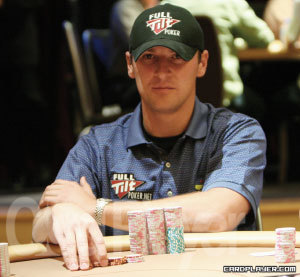






Heads Up With Michael GraczRebuy-Tournament Strategy| Published: Jun 11, 2008 |
|
|

Michael Gracz has been traveling the tournament circuit for only four years, but he has amassed an impressive $2.89 million in career earnings. The 27-year-old player's first big score came at the 2004 Trump Classic, and for that win, he made almost $300,000. He followed that up with a World Poker Tour limit hold'em title, and then during the summer of 2005, he won a World Series of Poker bracelet. Gracz attributes his success to his ability to make adjustments to his game, and that skill is especially valuable in rebuy tournaments.
In rebuy tournaments, you obviously are able to play a little bit looser because you have a safety net. That means that you can open up your starting-hand requirements, but you don't want to get too loose. I often take advantage of the players who play too close to the edge. If I know that a player is playing too loose, I will adjust my starting-hand requirements when I play against him, because I know that my hand is a favorite over the range of hands that he could have. After the flop, many people just shove with draws, and that is why, early in rebuy tournaments, top pair with any kicker can be a very profitable hand. Toward the end of the rebuy period, a lot of the short-stacked players will begin to move all of their chips into the middle. They either want to accumulate some chips so that they have an average stack or get busted so that they can rebuy. Basically, they want to double up or rebuy. At that point, I will often start to get even more aggressive with marginal hands like A-Q or even medium pocket pairs. I am willing to gamble as the rebuy period ends, because I know that everybody else is, too. When the rebuy period ends, there is usually an add-on. Certain players always like to take the add-on, but I take it only if it will add 20 percent or more to my chip stack. If it is less than that, I think that I already have enough chips and the add-on is nominal. I think there is no need to spend that extra money on chips that will not really affect my chip stack all that much. 
To view the entire interview with Gracz, and other strategy videos, please visit www.CardPlayer.com/tv and select the Strategy channel.